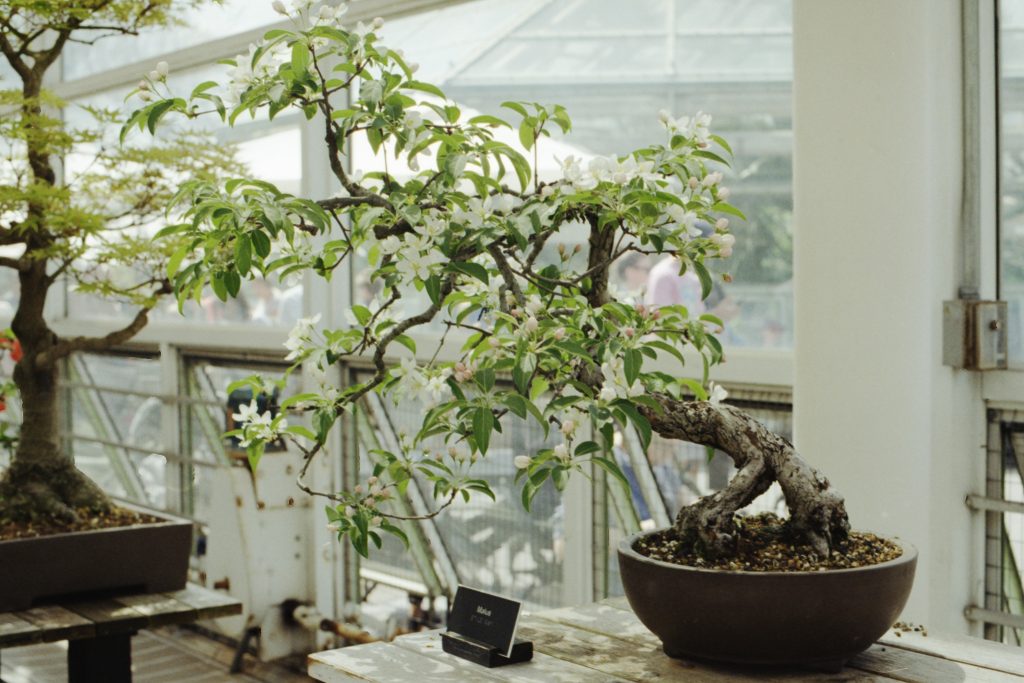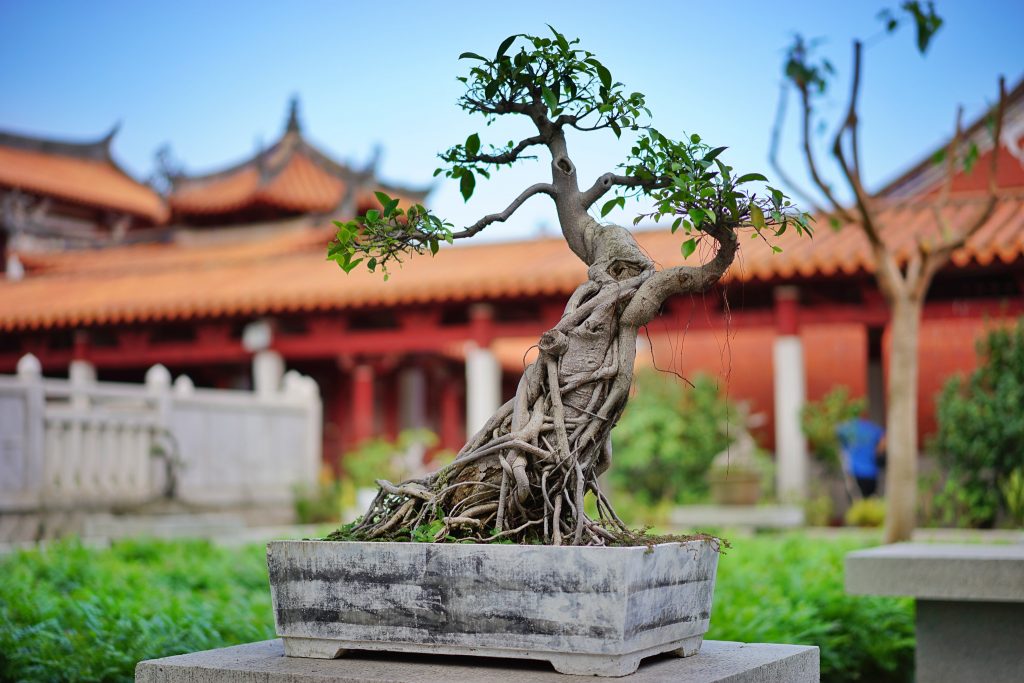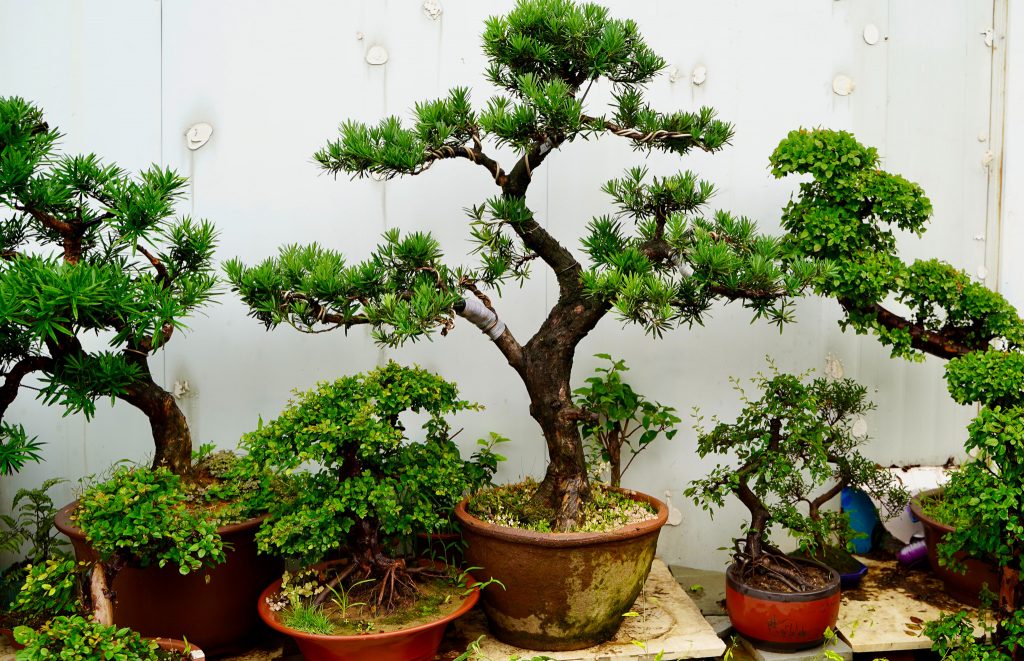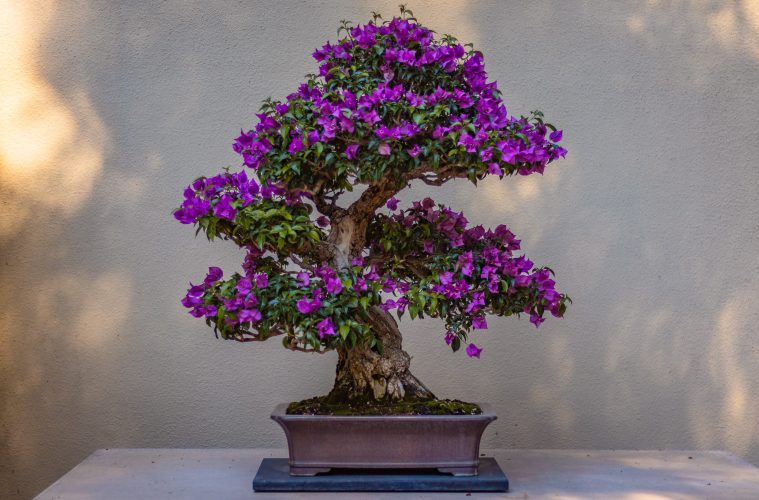The incredibly rewarding horticultural art of bonsai has seen consistent interest from the gardening public during the 34 years I have been growing them. This interest is a mix of awe and disbelief and it has the peculiar effect of causing many competent gardeners to forget most of their skills when confronted by a small tree in a pot.
Bonsai can be quite easy to care for once the conditions surrounding the tree are right. A few hours of morning sun in an airy spot protected from strong wind works very well. You need to be disciplined enough to check on your little tree every morning to make sure that the soil is moist and there are no pests or diseases gaining a foothold. Over time, this routine will become a ritual that will start your day and, like brushing your teeth, you will feel out of sorts all day if you miss it.
As the tree grows, you need to keep the bonsai trimmed in an aesthetically pleasing shape. After a couple of years, the tree will need to be repotted into fresh soil and may need a more dramatic prune to recapture the original shape of the tree. If you are not confident doing this, then take it to an experienced bonsai artist that can maintain the shape of the tree for you.
Despite this relative simplicity in looking after bonsai, there are still many myths that surround the art.

Annie Spratt via Unsplash
Myth: Bonsai are indoor plants
One of the biggest problems we face as bonsai teachers is that most exhibitions and tree sales happen indoors, so this perpetuates the mistaken belief that bonsai are delicate indoor plants needing protection from the environment. This is not the case. Bonsai are normal trees that thrive when exposed to adequate sun, an airy environment, good rainfall and, if needed, a decent cool winter rest. That being said, they shouldn’t be exposed to harsh outdoor conditions like blazing afternoon sun and winds as this cause the leaves to burn and the soil to dry out.
That doesn’t mean there aren’t ways to grow bonsai indoors though. There are some species of trees, such as wild figs, that can be grown indoors. If this is the only place you have for bonsai, then chose these species to work with.
Myth: Bonsai must be old
One of the goals in bonsai is to create a tree that looks ancient, filled with a long life of stories. However, trees can be quite young while still having this aesthetic character. The tree looks old due to a proportionally thick trunk, well placed branches that appear to be sagging under their own weight and deadwood features that indicate that the tree has persevered through storms and other attacks. Starting with a good nursery tree, one can develop an attractive bonsai in two to five years. Real age does help the tree grow attractive bark and a mature growth pattern, but it is not a requisite.

Keith Fox via Unsplash
Myth: You are too old to start bonsai
Yuji Yoshimura (an American bonsai pioneer and master) was still planting slow growing pine seeds when he was 90. To him the joy was not the final bonsai but the process of nurturing the little trees and watching them develop. You do not need to have the ambition to own a world class collection of trees. Owning a few bonsai in a corner of your patio and witnessing the change of the seasons through fresh spring growth, summer opulence, autumn colour and winter starkness is a pleasure in itself.
Myth: Bonsai uses lots of water
Advice columns often talk about watering trees two or three time a day. In my collection this is not needed. During summer the trees get a good drink in the morning and this will last them until the next day. The very small trees are grown on a gravel bed in a slightly sheltered spot so that they do not dry out too fast. During the cooler months the trees are watered as required, usually every two or three days if it has not rained.
Compared to watering a whole garden, bonsai make very efficient use of the water that is supplied. If you design your garden in a minimalist way you can save a huge amount of water while still achieving a wonderful impact with a well displayed collection of trees and carefully placed groups of plants.
Myth: Bonsai is cruel
When European travellers started exploring the Far East, they had great difficulty understanding the new cultures that they were encountering. This lack of understanding lead to the belief that many of the horticultural practices present in the societies were cruel and unnatural. This excerpt from Scientific American in 1847 shows the prejudice and lack of understanding of what was being seen:
“As for the dwarf trees, there was in that a mystery of horticulture… little trees of the height of some few inches, pitiful to look at, unhealthy, distorted, and covered with excoriations without number, … That for the Chinese nothing is beautiful but what is hideous; … and so the principal occupation of the Chinese nurserymen is to combat nature in everything that is beautiful and rich.”

Plants are very different to animals. They are a modular structure of repeated Stem-Bud-Leaf units and so the plant can maintain its health and vigour by discarding unproductive modules and developing new ones in better positions. In horticulture, people make use of this character to develop plants that are strong and productive.
Bonsai are very carefully cared for with every need being supplied. Ordinary horticultural techniques are used (pruning, trimming, training to a shape, and feeding) to develop healthy leaf, flower, fruit and root growth. But the aim is not to increase plant size and yield; we want to create a living artwork that is aesthetically beautiful. There are anecdotal stories of bonsai living for much longer that their wild counterparts, proving that the practice does no disservice to the plant.
Myth: Bonsai should be small
Mainly due to the availability of starter material and pots, the bonsai that we grow in South Africa are generally medium sized trees (20 to 50 cm tall with some people growing tiny ones down to 5 cm tall). In the East most trees are between 60 and 100 cm tall with some of them over 2 meters tall. A definition of bonsai is “an artistically trained tree in a container” and so one can call these large trees “patio bonsai”. However, they are generally rather impractical because they are so big and cumbersome to move around. It is best to grow trees that you can easily handle and move to make care and training simpler.
Myth: Bonsai started in Japan
Bonsai was mainly introduced to the West from Japan with an influx occurring when troops returned from duty at the end of the Second World War. During this time China was closed off to the outside world. This has led to the belief that Japan developed bonsai, but it was in fact started in China and introduced to Japan by monks in about 1300.
If you would like to get more information about bonsai in your area, visit the South African Bonsai Association at www.saba.org.za
Written by Carl Morrow, author of Bonsai Success in Southern Africa
Featured image: Devin H via Unsplash


